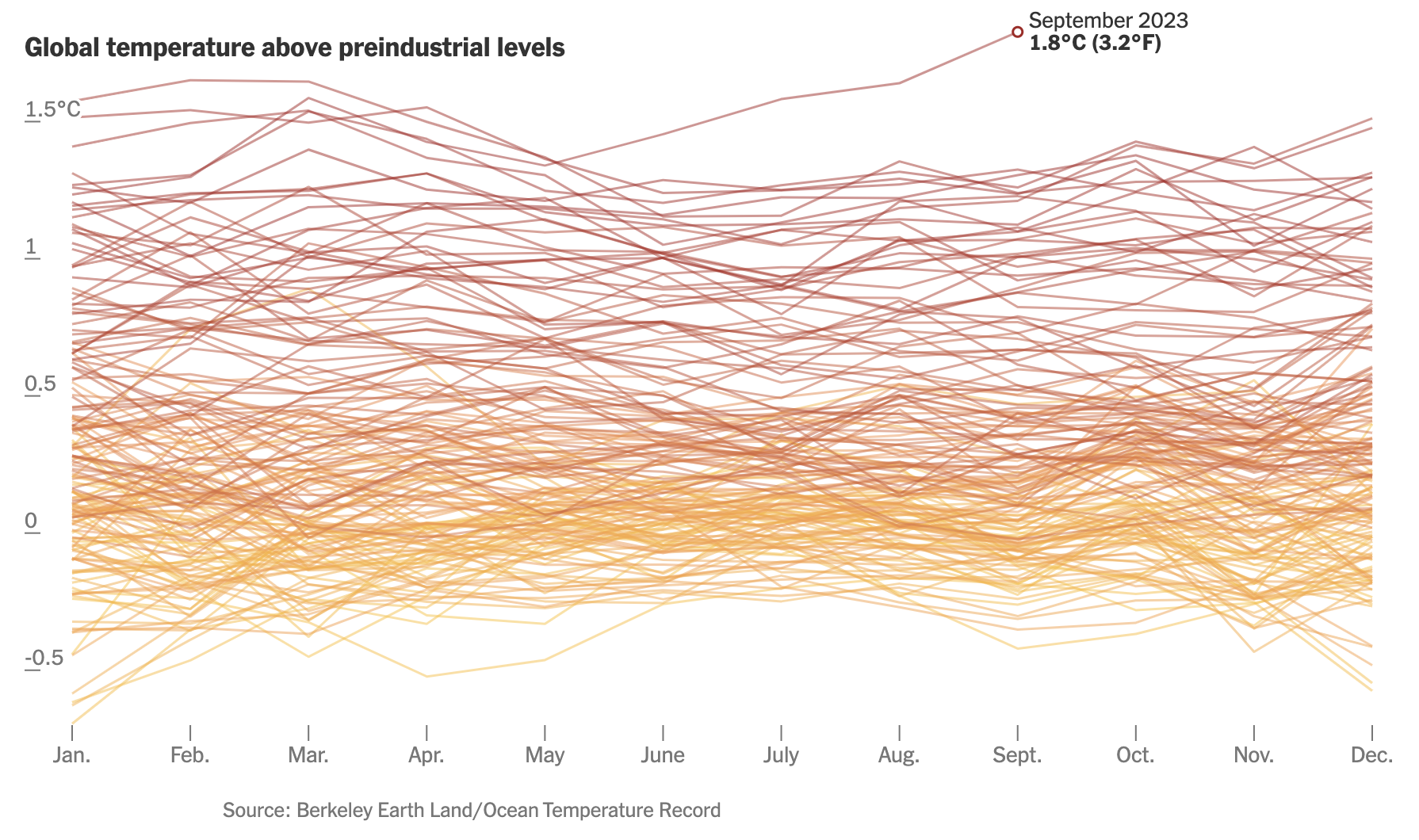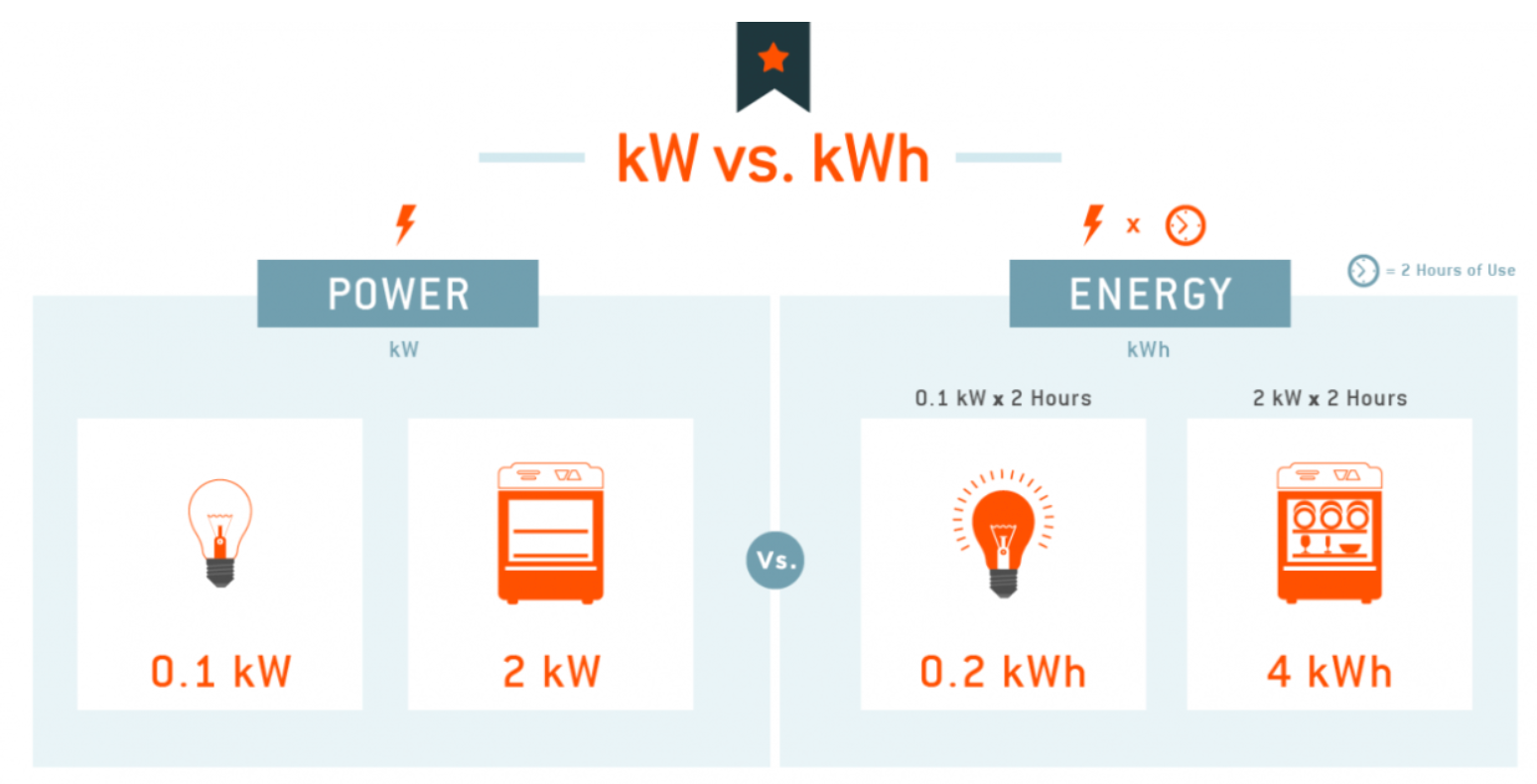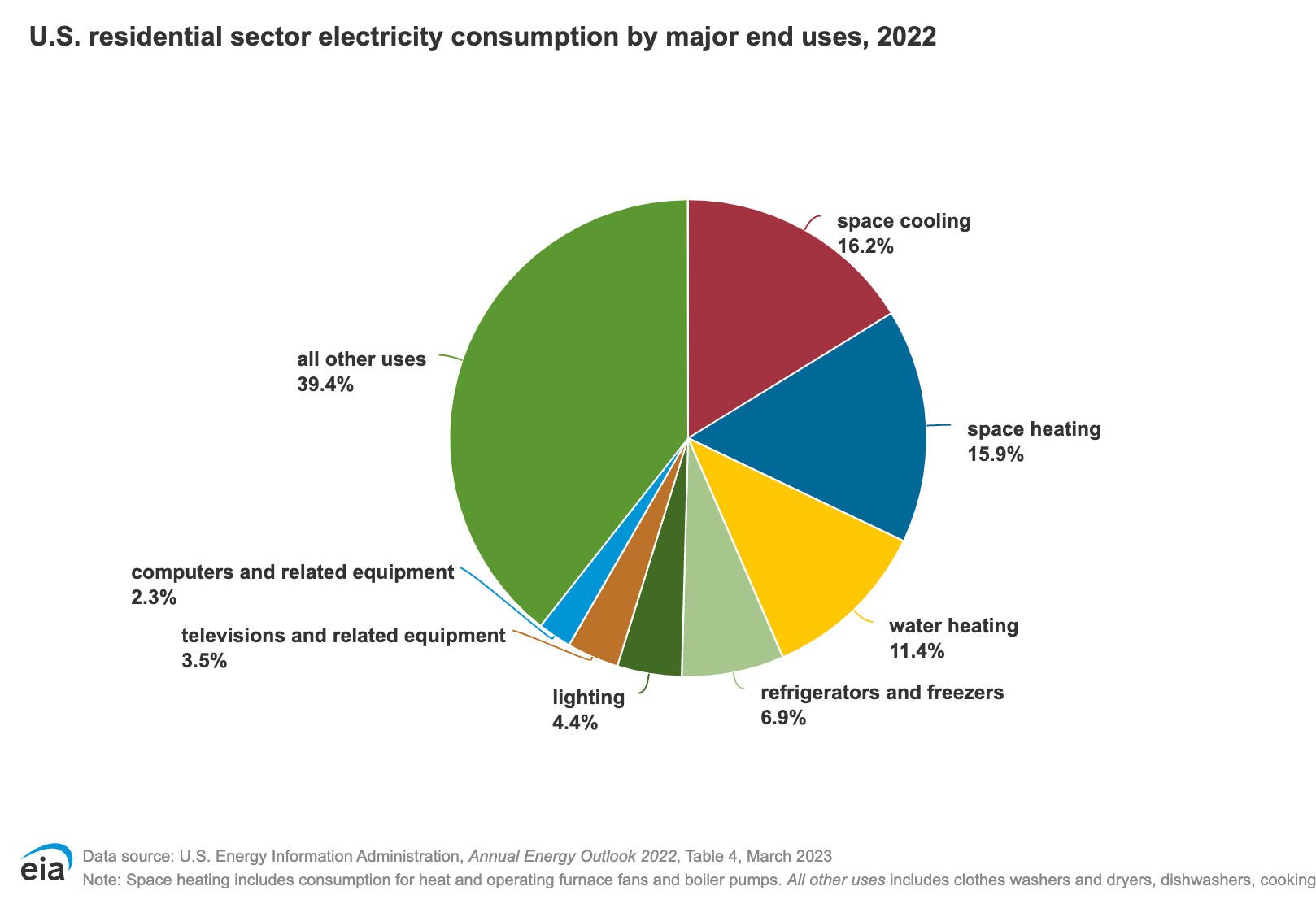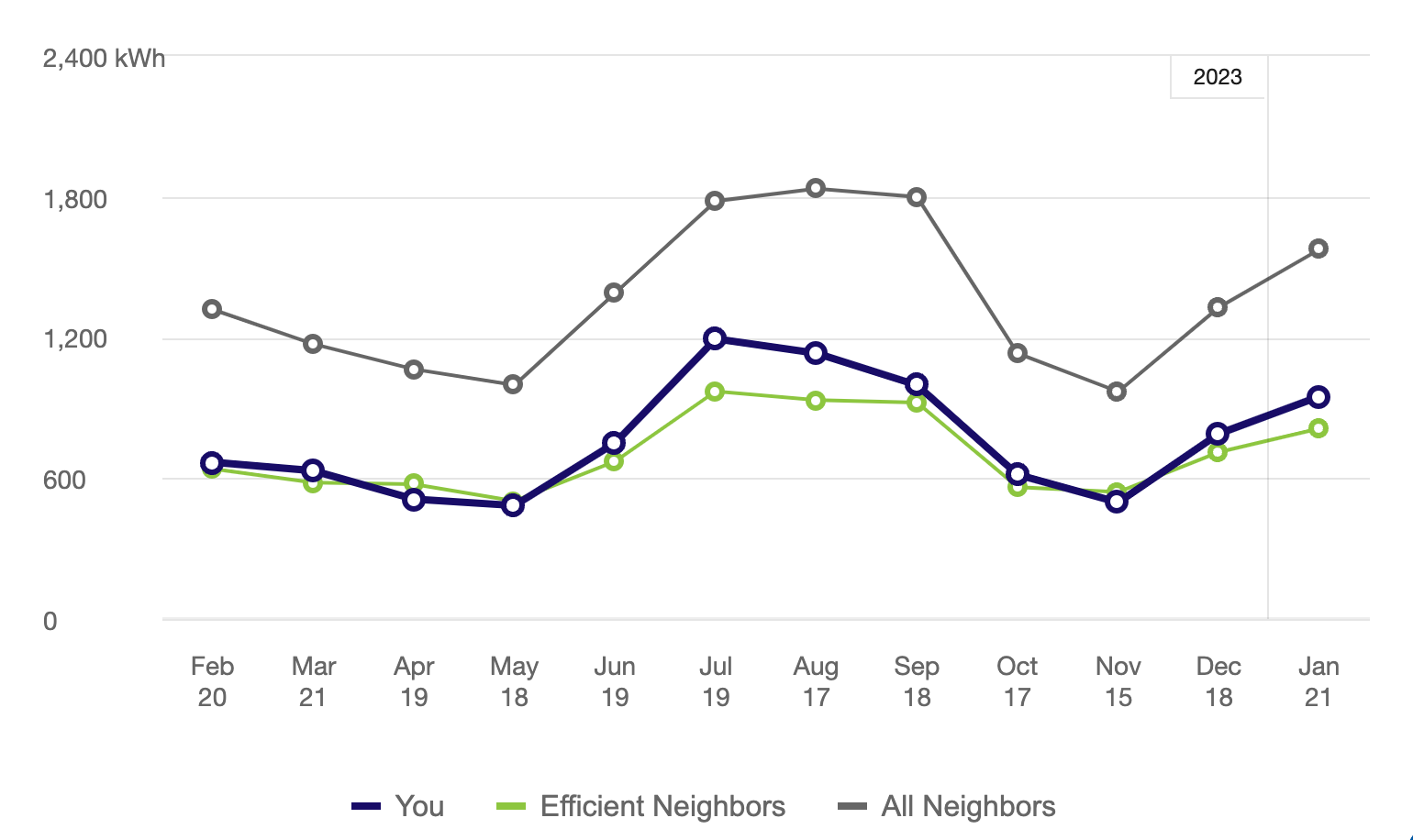Energy Usage
Mindset of Change
Electric Feel by MGMT
"What good is power when you're too wise to use it?"
Ursula K. Le Guin, A Wizard of Earthsea
In the US in 2022, residential energy use accounted for 38.4% of total retail electricity sold, a larger percent than commercial energy use.

Of course, as much of residential energy usage is due to weather conditions (like AC and heating), weather changes year to year can affect this. With climate change, average temperatures are increasing and our reliance on heating is likely to decrease as our reliance on AC increases. Nonetheless, residential energy usage has been increasing over time and is likely to stay high without intervention.

Now, lets take a moment to understand this unit of measurement. A kilowatt-hour or kWh is a common unit to measure energy, and a kW is a common unit to measure power. Power is the rate at which something uses energy, and energy is the capacity to use that power for one hour.
Thus, when we say that the average American used 12,702 kilowatt-hours of electricity, that means we spent 12,702 hours using 1000 watts.

We use that energy for a variety of things, most importantly to heat and cool our homes, but also to provide hot water, light, and to power our computers and TVs.

Why does this matter?
If you're curious why this matters, check out my other post on energy sources. In essence, its because most electricity in the United States is provided by burning fossil fuels, and the more electricity you use, the more fossil fuels need to be burned. In 2022, the average amount of fossil fuels required to produce 1 kWh or energy was:
- Coal–1.14 pounds/kWh or 2.3 pounds of CO2 emissions
- Natural gas–7.42 cubic feet/kWh or 0.97 pounds of CO2 emissions
- Petroleum liquids–0.08 gallons/kWh or 2.38 pounds of CO2 emissions
- Petroleum coke–0.85 pounds/kWh or 0.86 pounds of CO2 emissions
For fossil fuel per kwh: (eia.gov) For carbon emissions: (eia.gov)
So what does that mean for the carbon footprint of the average American and that 12,702 kWh? Well, it depends. It depends on how much of your electricity usage comes from coal vs natural gas vs petroleum (liquids vs coke) vs renewables vs nuclear. For 100% renewable energy or for nuclear, the number will be much lower. (Unlikely to be zero immediately because making and installing solar panels has its own costs and building nuclear facilities certainly does too, but over time and over millions of people, this cost approaches zero.)
Thus, if you've switched your utilities to use community solar or if you have solar panels (see the energy sources post for info on how to do that), you've already done the lion's share of the work to reduce your footprint from electricity usage. However, unless you're off grid (in which case, you are likely well aware of your energy constraints) there are still knock-on benefits to reducing your energy usage.
- You'll probably save money.
- If you have solar panels and you're using net metering, you are still pulling from the grid, which is likely to be using predominately fossil-fuels.
- It's generally good to not be wasteful about your electricity usage, if you can develop a reasonable approach to reduce it.
- Many of the things you can do to reduce energy usage improve home safety.
So, without further ado, lets dive into how we reduce our energy usage.
Reducing your energy usage
The majority of this advice is not new (in fact, its stuff your grandparents probably did) and its not sexy (are utilities ever sexy?), but its also not that difficult. We need to assess heating and cooling, "vampire" or phantom energy use from electronics (aka power they suck when you're not actually using them), and efficiency of lighting and appliances. But first...
- Learn about your energy usage. You can skip this if you want, but I always find it helpful to learn about the status quo before I try to change things. Besides, its sort of fun.
- Check out your state's power profile aka where the power comes from.
- Check out your state's energy use profile aka how the energy is used.
- Check out your individual energy use profile on your utility's website. Note: its worth getting familiar with your utility provider's tools and features for measuring energy usage.
- 'If your home has a smart meter and you can see your hourly consumption, then examine your consumption at 3AM. It should be significantly less than your use at 7pm. If it isn’t then you might have “vampire loads.”.' (energy.gov)
- Assess your home.
- Take note of your home's heating/AC setup.
- Do you have control of it at all? (For renters, especially in older buildings or with shared utilities, this can be tricky.)
- Are there different zones in the house where the temperate can be set separately?
- Does your thermostat support timers?
- Do you have a household plan for the thermostat already?
- How old is your furnace and when was the last time your ducts were cleaned?
- Take note of your home's heating/AC setup.
- Make a list of your electronics and where they are located.
- Computers
- TVs
- Lamps
- Phone chargers
- Kitchen appliances like toasters and tea kettles
- Make a list of all your light bulbs.
- What kind of light bulbs are used by your ceiling lights or lamps?
- Make a list of all your appliances.
- How old are they?
- What brand and make are they?
- Make the plan.
- Talk to any stakeholders (partners, roommates) about appropriate temperatures for the thermostat in each season. Consider zones and times of day if applicable. Most people actually sleep better in cool temperatures, so don't be afraid to turn the heating down at night or the system off when you're not at home.
- Especially if you use the heater a lot, make an appointment to get your ducts cleaned and to get your windows checked for insulation. Curtains or screens over windows also provide natural insulation, whether you are trying to heat or cool, so consider this as well.
- We tend to cluster our electronics (the TV, stereo, receiver, speaker; the computer, monitor, lamp). Note how many electronics are in each cluster and research appropriate power banks. Make sure you get ones with enough extension that you can turn them off easily, without having to crawl under furniture. Also consider getting ones with overcharge or volt protection, which will preserve your electronics and avoid fire risk.
- Take the list of all the different types of light bulbs you need in your home, and research energy saving bulbs. Take the opportunity to note the kind of light you like for that space and where you can find the right replacements.
- Take the list of appliances and, in order of when they might need to be replaced, research replacements. Prioritize Energy Saver appliances.
- Note: Although most appliances should be replaced when they are at end of life, a heat pump water furnace may be the exception, especially if you use a lot of hot water and do not live in a very cold climate (forbes.com). If this sounds like you, do a bit of research about when it might make sense to replace your hot water heater.
- Do the plan.
- Implement the thermostat plan. If you can set it ahead of time, do it. Otherwise, set reminders to turn it up or down as needed.
- Following your duct cleaning and insulation appointment, take the appropriate action. Schedule a follow-up appointment, or thrift some curtains.
- Dusty ducts are a fire hazard, so be sure to get them cleaned regularly.
- Buy your power banks and plug in your electronics. Turn off the whole bank when you are done with them.
- If you WFH, your home office could probably be turned off on the weekend.
- Definitely turn them all off when you go out of town.
- Reference your light bulb list when one burns out and buy new ones.
- Reference your appliance research when you need to replace one, or schedule an appointment to get your hot water heater assessed.
- Bonuses
- Turn off lights in rooms when you're not in them.
- Use cold water when washing your laundry and hang dry your clothes. (They actually last much longer this way.)
- Use the eco settings on your washing machine or dishwasher.
- Make sure your shower heads are low-flow (especially if they were installed pre 1992).
- If you have cause to replace a toilet, make sure it is a low-flow toilet.
- Start using hot water bottles and slippers/sweaters in winter.
- Watch your energy usage go down and feel superior to your neighbors.
- Check your utility provider monthly and see your energy usage decrease over time.
- When you become more energy efficient than the majority of your neighbors, make sure to humble brag about it. It's for the environment!
If you need some inspiration, here is my humble brag:

You can see from my graph that AC in the summer is really a bummer. With climate change, this is not likely to decrease unless we start utilizing smarter building practices. And because I think environmentally-smart architecture is super cool, double inspiration today!
If you want to dig deeper, I highly recommend this really interesting lecture on climate resilience architectural traditions and innovations.